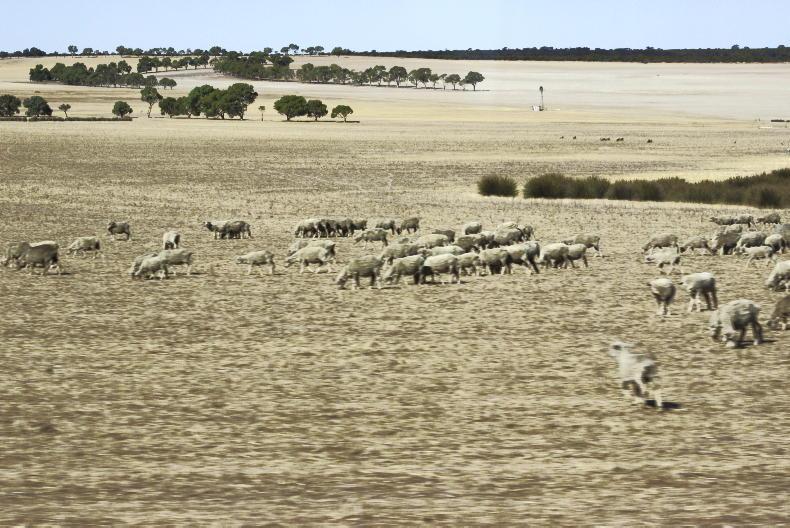For some time, New Zealand has been the world's leading sheepmeat exporter, followed by Australia, and between them they account for almost three quarters of all sheepmeat exports.
A long distance back in third place is the UK, which accounts for about 6% of the sheepmeat exported, and then Ireland, which accounts for around 4%.
However, sheepmeat production in New Zealand (NZ) has been in decline over a long period, while, in Australia - notwithstanding the disruption caused by periodic droughts - it has been an upward trend recently.
NZ peak
The NZ sheep population peaked at over 70 million in the early 1980s, but this had fallen below 40 million by the end of the decade following the sudden ending of government farm support in the middle of the decade.
As Figure 1 shows, there has been a steady decline over the past 20 years to a low point of 25.3 million in the June 2022 census.
This has been caused by a combination of change in land use – dairying has been more profitable and forestry has been a competitor in more recent times on more marginal land traditionally associated with sheep.
Also, with no government support for the sector, market signals are decisive in shaping farm policy.
In this respect, the collapse in value of wool in recent years caused by changing fashion trends has hastened the decline of an already weak sector.
Australia numbers
The Australian sheep flock has been shaped not just by market demand and land use competition, but also by drought.
Numbers dipped to 65.5 million, their lowest in over 100 years in 2019-2020 at the height of the most recent drought (Figure 2).
Yet with flock rebuilding since the end of the drought, Meat and Livestock Australia is projecting sheep numbers to reach 78.75 million head in 2023.
This is the highest since 2007, though it remains a long way below the high point of 180 million in the 1970s.
Trade
Both Australia and NZ are export focused, with NZ exporting up to 90% of production and Australia exporting around 70% of output. Volumes available for export have been shaped not just by slaughter numbers, but also by carcase weights.
Australia produces heavier carcases, now averaging 24.6kg, which is a 14% increase over the past decade.
While NZ carcase weights increased by 10% over the past decade, they are now averaging 19.5kg, which is less volume than Australia but more in line with specifications for the European market.
Overall, Australian sheepmeat exports for the year ending June 2023 were 473,985t (MLA), while the NZ total for year ending September 2023 was 357,672t (Beef+Lamb NZ).
Markets
What is of particular interest to Irish farmers is where NZ and Australia sell their sheepmeat.
There is concern that Australian volumes to the UK will rise sharply with the recent trade deal, but the heavier weights are something of a barrier.
NZ weights are more suitable for EU and UK markets, while the heavier Australian sheep are more suited to North American, Middle East and north African markets.
However, if the UK is much more financially lucrative for Australian exporters, we can expect production systems to change to meet the specification - if, of course, the price is right!






 This is a subscriber-only article
This is a subscriber-only article











SHARING OPTIONS: